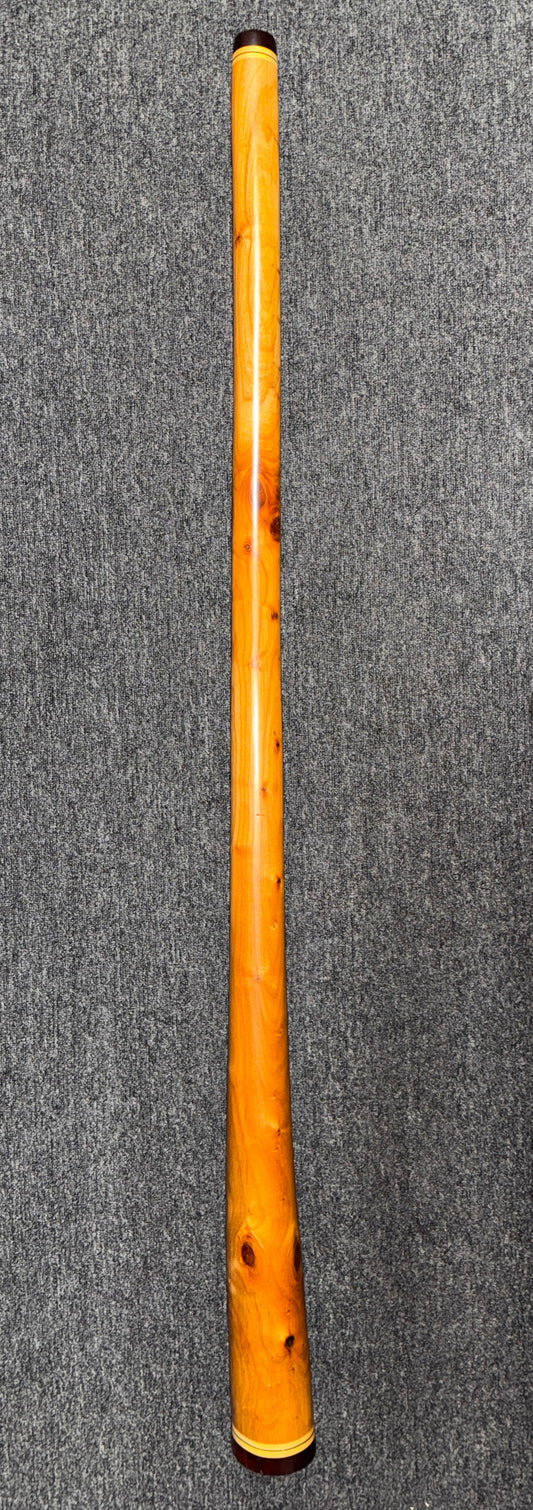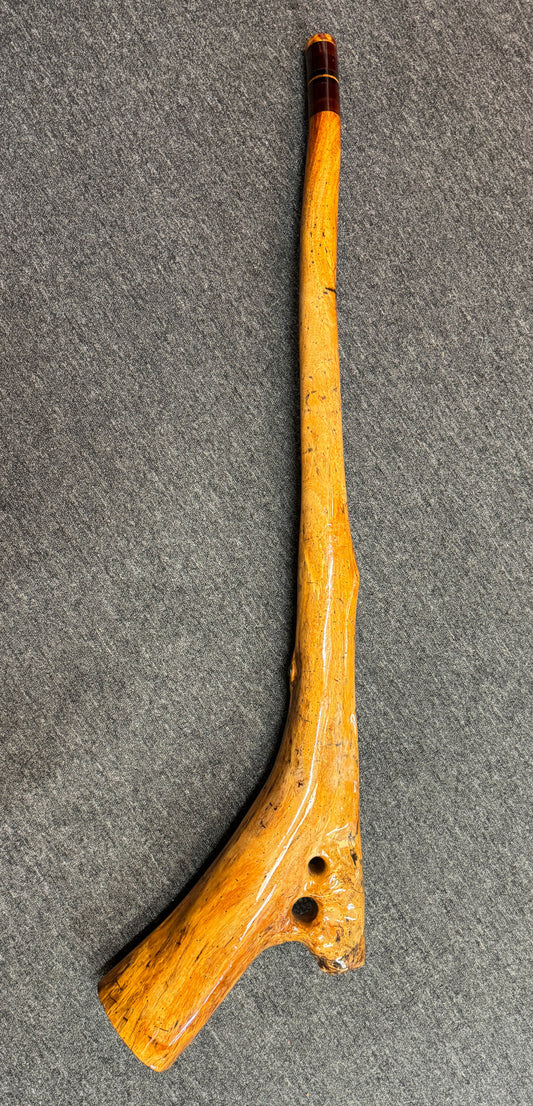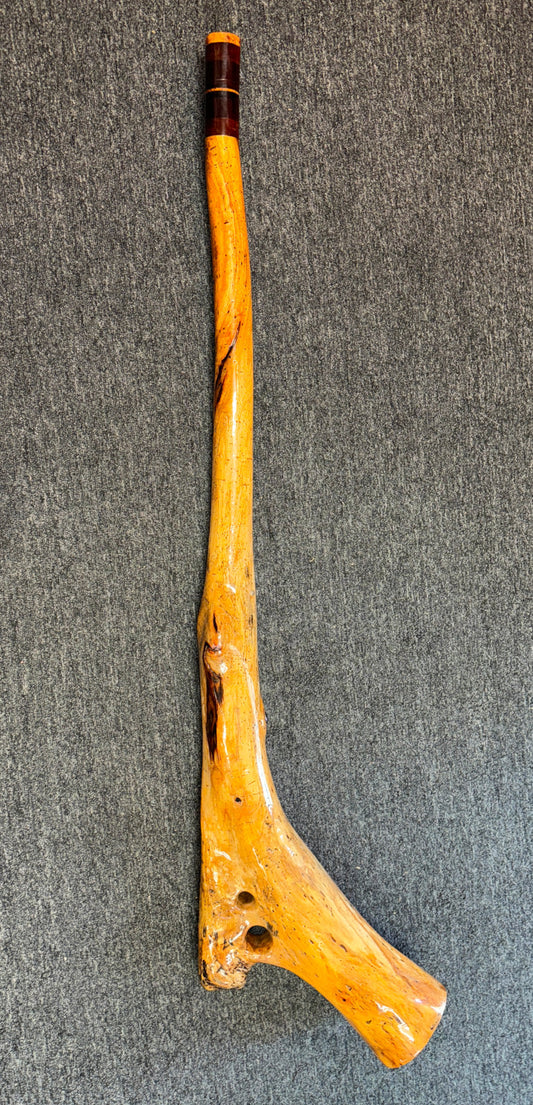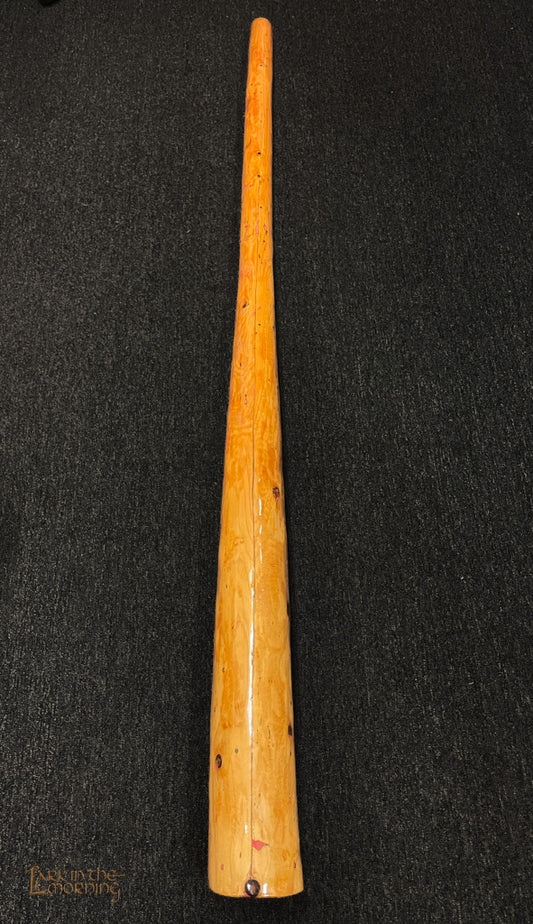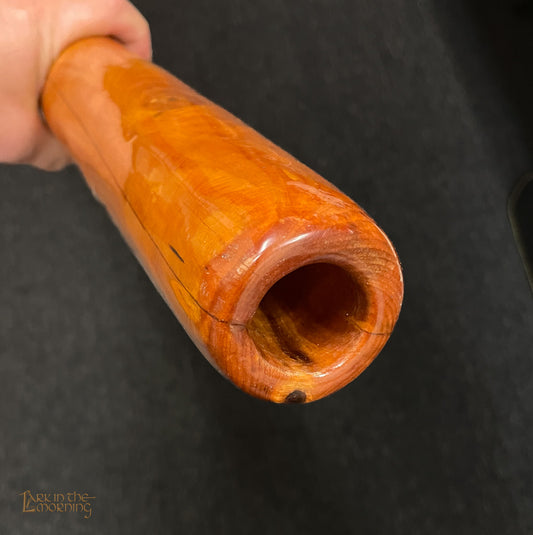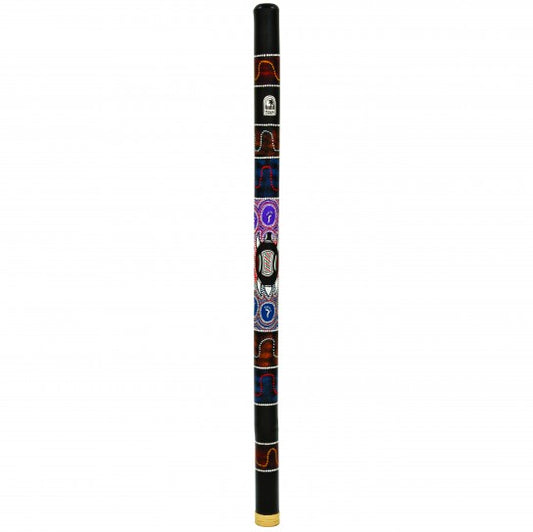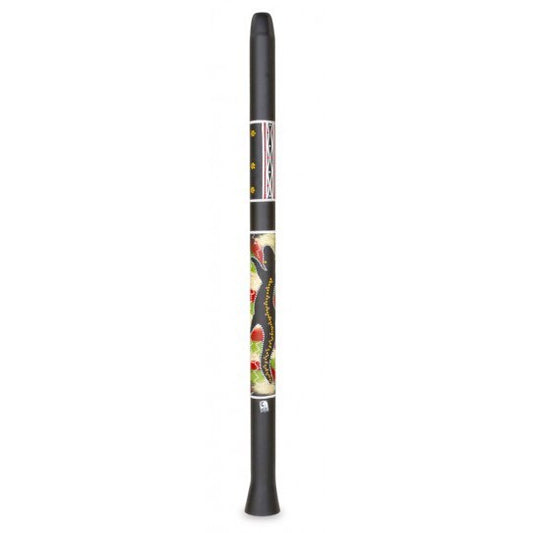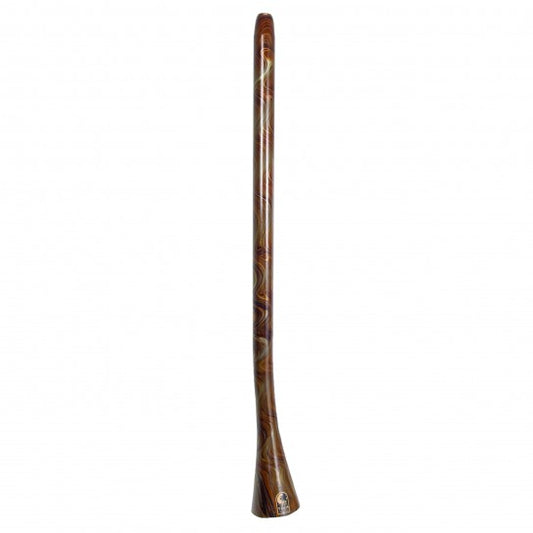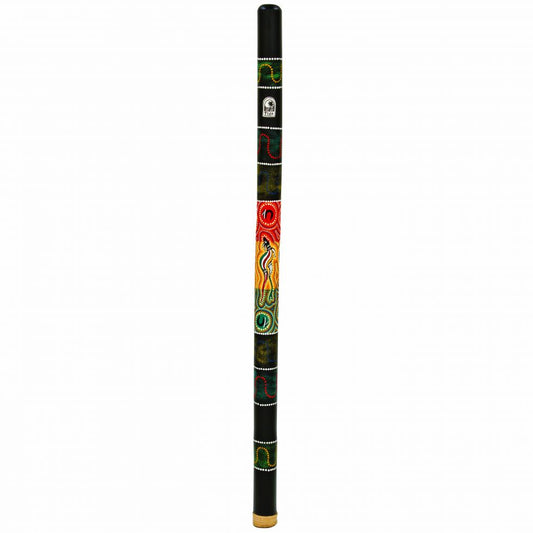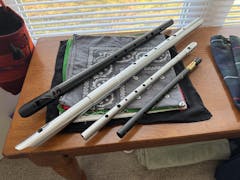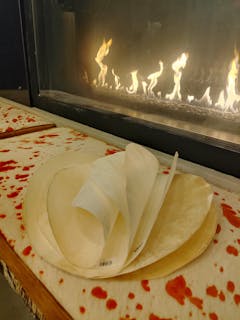Didgeridoos, native to Australia, have been around at least 1000 years. They are traditionally made of a eucalyptus tree that has been naturally hollowed out by termites. Modern didgeridoos are made from a variety of materials, including PVC and a wide assortment of hardwoods.
Hand-made didgeridoos have a multitude of variances that make each instrument unique, and sometimes even extremely different from all others. There are one trick ponies that do a few things really well, and may be blandish otherwise. This is not to say that the didgeridoo with the most features wins, quite the contrary. For example most Australian didgeridoos have only one usable overtone, and some have medium back-pressure, but might have amazing volume, tone and ring tone.
Tube length, shape and harmonics
The hard part first, cuz this is how the drone tone note is related to its length. With the exception of PCV-like didges, which are just tubes, any quality didgeridoo has a taper to the bore, and actually is composed of 3 distinct chambers. The upper chamber is the actual note-producing sound column. The next or middle section is a resonating chamber which gives tonal quality to the sound column. Then the bottom section forms the bell which amplifies and broadcasts the final sound. More on these later.
Slightly potentially confusing is that the drone tone is the 1st harmonic, and the trumpet tones (overtones) start with the 1st overtone for first trumpet, 2nd for second, etc. The reason that we do not call them 2nd harmonic, 3rd harmonic, etc is that they are pretty much never multiples of the drone tone, which would be like a guitar string or a bugle bore. Those have particular overtone series that are harmonics and are mathematically related to the base note. Trumpet tones of a didgeridoo do not follow that math at all. Every didge is a freak of nature.
A tube with no taper, like PVC, has a drone tone note, or Key, exactly proportional to the length, defined by the formula for the speed of sound. The drone wavelength is 4 times the length. And the speed of sound (340m/s) divided by the wavelength gives the frequency. (Fr = Sp / Wave) A 4 foot tube is about 1.22 meters, so 1.22 x 4 gets a 4.88 meter wavelenth. And 340 m/s divided by 4.88 equals just over 69 Hz which is C#2 for a note. That's all the math that is ever going to be on this quiz.
The reality of a didge is that the taper reduces the actual length of the sound column, and the faster the taper expands the more the sound column length is reduced. So the same length tapered sound column will have a higher drone tone note than a simple tube. That's why a long skinny didge will have a lower note than the same length didge with a taper. Conversely, a tube with too much taper is just a megaphone and a drone tone will be impossible, and probably have no trumpet tones either.
Three sections of a didgeridoo
Now about those three sections. The most playable didges with the best tones and overall quality come about when the internal air volume of each section is about the same, or about 3 even sections. This does NOT refer to length, but more about length figured against cross section to yield a volume figure, like liters or quarts. When the sound column is way larger / longer than the resonant chamber plus the bell, it is kind of like putting a paper towel tube into a tree trunk, so no playing control and very low sound volume cuz the sound column power can't wake up the air inside the trunk and make it vibrate well.
The resonant chamber is harder to explain. It is kind of the quality link between the power of the sound column and the amplification of the bell. Many plastic didges are a tube plus a bell, some with no taper to the tube. They make noise and have fair sound volume, but no richness or character to the overall sound at all, kind of a sterile sound. This is related to the lack of quality overtone series generated in the sound by the lack of a resonating chamber to "mix and modify" the sound column. So the resonant chamber is more about adding sound quality than sound volume. The exact shape is not so critical, maybe tapers, maybe not. But if it restricts at the bell end of it, then the sound is muffled, maybe easy to play, but lacking quality and control.
The bell action is akin to that of most wind instrument bells, broadcast and amplification. When the bell is more tapered and extreme in size, the sound volume output can be VERY loud. If the sound column on that didge is longer with a more slight taper, then the didge may well exhibit the feature of "overblow" when played at high pressures. One increases to air pressure at the mouthpiece and the sound volume increase way more than a didge with an average bell. Sometime the overblow note pitch can rise well above the initial drone tone pitch, a half step or more. These didges can make everything in the room shake and rattle. Often the trumpet tones from these didges is deafeningly loud. A favorite bell shape is the skull and other uneven shapes. The lower diameter section enhances the mid and high range sound volume, and the longer diameter section make the bass loud, with great overall quality and richness.
About back-pressure
A common term is back-pressure, which reflects how easy the didge is to play and how little actual air output from ones mouth it takes to make the drone tone. Rather than get into a really complicated speech about air columns, here is the simple version. Back-pressure is when the air power from the mouthpiece fights against the standing wave of the sound column, literally pushing back slightly towards the player's mouth. A small diameter makes for more backpressure because the standing wave requires a range of diameters to even allow the note to occur. Too small a diamter, like 3/4" on a 3-4 foot column makes it impossible to generate a drone tone cuz the standing wave of the drone tone requires a minimum diamter just to occur. Trumpet tones will be easy, but no drone tone. That is why one cannot elicit a drone tone on a trumpet, the tubing has too small of a diameter. But the backpressure of the trumpet is really high, making it actually the easiest instrument with which to learn how to circle breathe.
So the essence of good back-pressure is this: Somewhere around 1/4 to 1/3 of the way down the sound column, the bore either stops widening for an inch or two or maybe even slightly squeezes down. That somewhat divides the active sound column so higher pressure pulses are slightly restricted giving the sensation that the power bounces back to the mouthpiece, which is exactly what happens. The more the restriction and the smaller the overall sound column bore, the higher the back-pressure. The result is that the didgeridoo is easy to play, and one gets longer drone tone times for the same amount of air volume leaving ones mouth. Good back-pressure makes it easier for beginners to learn to circle breathe.
Circle breathing, or circular breathing, is when one can pull air in through the nose in short bursts while continually blowing air out through the mouth, and so continously playing the didge with no stoppage. Some counsel to try blowing through a pinched off straw into water to get the hang of it, and slowly releasing some of the pinch to more imitate playing. Maybe try circle breathing with a bugle or trumpet, since they require such a low air volume to play. But a nice skinny didge with great backpressure will defintely get one circle breathing way faster and better than some Aussie log with a bore like a cannon. There are a host of other techniques to enhance and develope circle breathing.
Best to let a didge air out a bit after playing. There is always some condensation inside. Let it dry before putting in any case that could inhibit evaporation.
With didges that have no finish or oil inside, rotate every so often so the saliva trail does not hit in the same spot always. Raw wood absorbs water orders of magnitude faster than an epoxy finish, or even just an oiled surface. The humidity should be spread around a bit. The results can be cracking even with very old didges. Many Aussie didges are like this. In fact, one of the reasons that Aussie didges are so thick is to reduce the possibilty of cracking by giving more wood to absorb the water from playing, as well as from climate humidity changes.
Take care of beeswax mouthpieces. They can melt off in the heat of a parked car. Beeswax gets soft around 100 degrees (40C), and can be reshaped, but it melts entirely at around 140 degrees (62C) and will just be a puddle on your seat or trunk.
When making beeswax mouthpieces, clean any oils or debris off the end of the didge. There are two approaches, dipping in hot beeswax or preforming a ring shape. One should use a doubleboiler just like with candlemaking, and try not exceed 170 degrees, consistent overheating can degrade the beeswax. One simply dips the didge in a short distance and then lets it cool. Apply several coats, and finish forming during the final cooling. Preforming means rolling out a tiny weiner of wax with slightly tapered ends. The weiner should be 1/4' to 1/2" in diameter. Then make a ring by kneading the tapered ends together. Warm up the end of the didge in sunlight or with a slight bit of blowdrying. Apply the warm ring and press into place evenly.
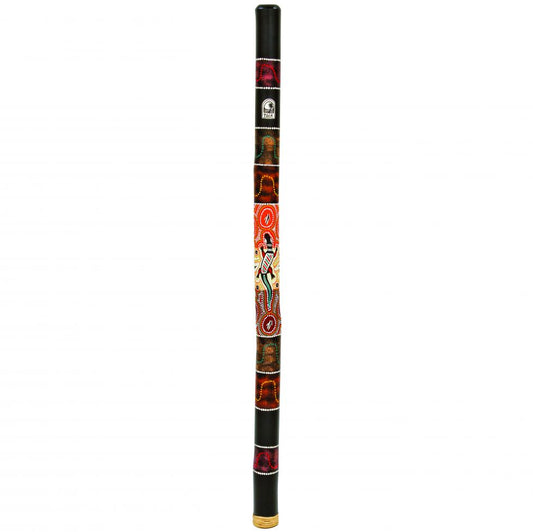 Sold out
Sold out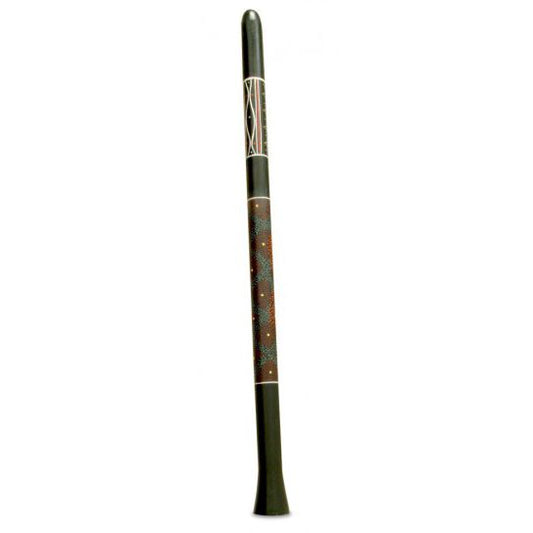 Sold out
Sold out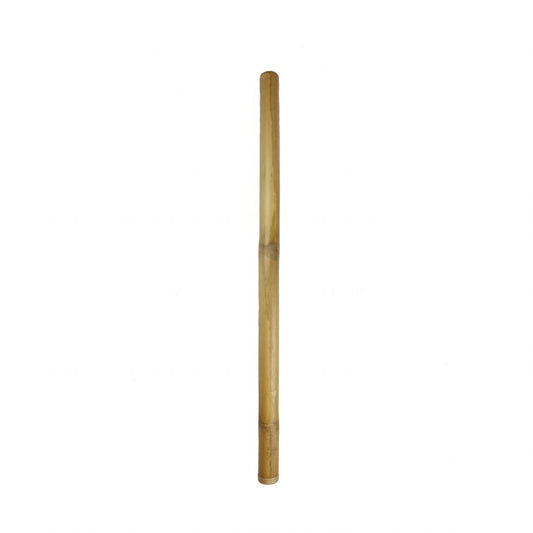 Sold out
Sold out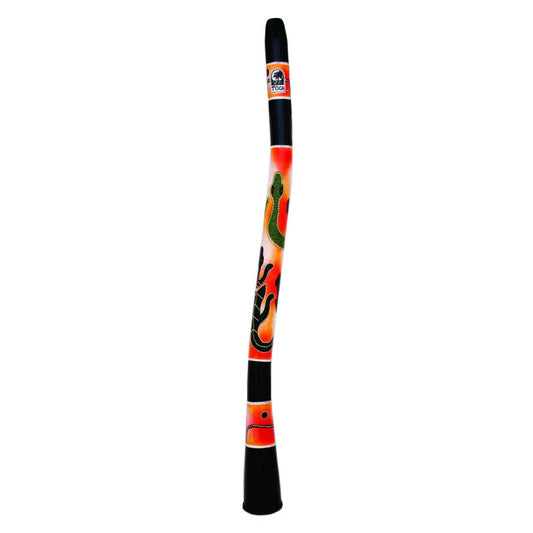 Sold out
Sold out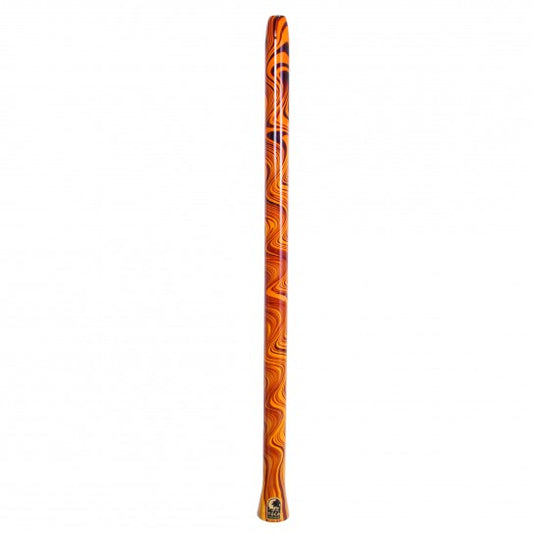 Sold out
Sold out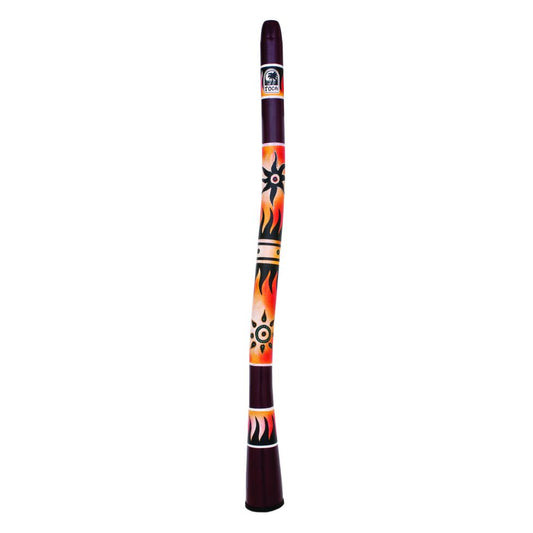 Sold out
Sold out

